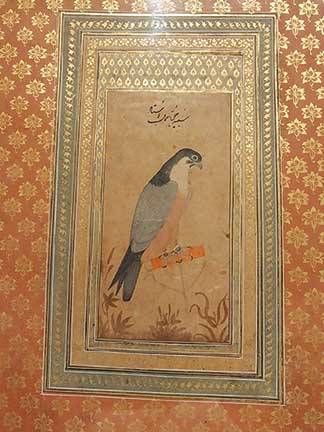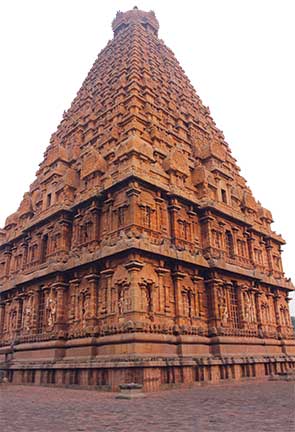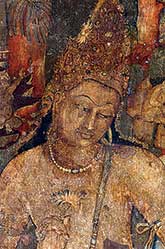Dr. Arshiya Sethi
The opening lines of the National Education Policy 2020 states three main purposes of education – achieving full human potential, just and equitable education, and national development. These goals are intended to segue into the Sustainable Development Goal 4 (SDG) that India adopted in 2015 – “To ensure inclusive and equitable quality education and promote lifelong learning opportunities for all”. Indian education has been beset by many problems – poor learning outcomes, ennui, joyless rote learning, a high dropout rate, and unemployability. While the Right to Education has ensured an almost 100 per cent enrolment in primary education institutions, the challenge is in retaining these numbers which drop to less than 57 per cent by classes 11 and 12 (3.1).
One of the reasons proffered to explain these drawbacks is the failure to develop non-cognitive skills as a part of school education, particularly early and primary education. What are non-cognitive skills and what do they achieve? Non-cognitive skills are soft skills that nurture the child’s personality, confidence, and emotional quotient and are the skills needed for strengthening interpersonal relations. They are achieved through exposing the child to joyful experiences, extraversions, and happiness, while escaping neuroticisms such as anger, anxiety, depression, etc.
NEP 2020 has adopted one very important feature by which it hopes to achieve some of these, as yet out-of-reach, goals. This is the introduction of arts in education, as an equal trajectory, in all classes, making it an example of the flexibility the policy makes available in the options spectrum, for every individual student’s study, in keeping with their interest and talent. It is hoped that this sense of ‘Ananda’ that accompanies artistic expression, would help retain students who would otherwise be drawn away, due to the hardships and tedium of unimaginative schools. This arrangement, of no hard separation between the arts and the sciences, goes by the moniker of STEAM, having included the ‘A’ for arts, in the hitherto privileged STEM streams. The absence of hard separations is reinforced in the continuum for curricular, co-curricular, and extracurricular subjects, academic and vocational courses, as much as for the domain of arts, humanities, and sciences.
Being a STEM – Science, Technology, Engineering, and Mathematics – educational system for so many decades, the addition of the “A” is a giant leap forward towards making education holistic, integrated, enjoyable, and engaging (Section 4). The Arts in Education programme is broad-based and open ended, aligning itself organically to local and regional arts, incorporating the vision of income generation for and the engagement of local talent pools – artists, artistes, and crafts persons. This is also intended to dovetail into the principle and prominence that the NEP ascribes to amalgamating local language/mother tongue in education. Arts in education is indeed a paradigmatic shift, addressing the concern of the policy to encourage creativity and critical thinking, which it is believed will encourage logical decision-making and innovation apart from kindling a respect for pluralism and diversity of ideas. So committed is the policy to creating a stimulating learning environment (National Education Policy 2020; p. 5) for essential learning and critical thinking, that even a reduction of content is acceptable towards this end (NEP point 4.5).

The NEP created another role for the Arts, to serve as a portal for entry into any subject. This goal goes by the name of Arts Integrated Learning, and is a conscious thrust towards joyful learning (4.7). A cross-cultural pedagogical approach that would reinforce the links between education, culture and civilizational understanding, it requires deep thought to be applied to how, with the use of arts, the methodology of teaching and learning of any subject, can be facilitated and enhanced by the arts.
For example, history lessons which have often been an endless list of dates and events that needed to be learned by rote and regurgitated during the exams can now be illuminated by ballads and songs of the era. To understand the history of regional kingdoms, the students can be exposed to regional art schools like the Sikh school etc. Buddhism can get an evocative lead-in through visuals of the Ajanta murals. A fun session on “Draw the bird that you see” can lead into the depiction of animals and birds in Indian art, especially the boost to naturalist and botanical drawings under Emperor Jehangir.

Photos courtesy: Dr. Arshiya Sethi
History itself, through historical architecture, can kindle curiosity with the question of how such enormous structures like the Brihadeeswara Temple in Thanjavur, the Konark temple in Odisha and even the Pyramids of Egypt, could get constructed. History can also serve as an introduction to mathematics, with squares, triangles, circles and arcs to be identified. Economic geography could use the foods of different regions for a more experiential introduction into agricultural patterns. Naturally, this demands an open mind from the teacher, but even before the teacher comes into play, it demands close and imbricated working between syllabus makers and pedagogy experts, who will have to create standardized age-appropriate lead-ins for a range of subjects and levels.
Arts and crafts also enter the policy’s vision through the stress placed on arts, aesthetics and crafts via the bagless periods and the fun courses (4.26). It has an accompanying skein of traditional Indic knowledge. The stress on traditional Indic knowledge, it is hoped, will feed the deep-rooted pride of being Indian, while belonging to the world, not just in thought but also in the spirit of ‘Vasudhaiv Kutumbukum”.*

Unquestionably this is all very exciting, yet there are many notes of caution that need to be introduced. First, the scale of the project makes it challenging. It is without doubt too ambitious a project to initiate across India by 2025. The pace necessary for building facilities in an infrastructurally unsound and uneven India is a real problem. Further, the paucity of resources including digital outreach will serve as an impediment. At present only schools in Delhi, Chandigarh, and Puducherry have 100 per cent internet connectivity. The vital human resource element will need reinforcement, revitalization, re-engineering and respect, to cover the deficits.
Second, at the centre of the success of this great educational experiment is the teacher, a critical segment of the vital human resources referred to earlier. Currently, the vacancy in the ranks of teachers is a compelling problem, especially in view of the fact that the policy aspires for a PTR (Pupil-Teacher Ratio) of 30:1 and 25:1 (NEP Point 2.3). Additionally, the teachers that are there are trained in the old ways. Old ways, like old habits, are rather embedded and fixed and are hard to give up. While there are provisions for crash courses, digital training outreaches, schemes for continuous professional development and platforms for knowledge sharing (Digital Infrastructure for Knowledge Sharing: DIKSHA; 2.6), it appears doubtful if the old shackles can be broken and the new and special skills required to introduce and lead the seminal arts component of NEP, will be mustered adequately and in a timely manner.

It would appear that the government is cognizant of this lacuna and has provided for the gap to be filled via peer tutoring and volunteer efforts – but the fear is that this may result in haphazard, casual, unstructured, and mosaic learning. Recently, advertisements inviting dancers and musicians to apply for teaching positions with the government suggest that this is the way teachers are being garnered towards this project. This may introduce into the scheme, many fresh, enthusiastic but unguided missiles in the form of recent learners, practitioners, and performers, and it is well known that performers do not necessarily make good teachers, especially for far flung rural schools, where life, living, and the lived experience may be very different. Such an eventuality may not produce the desired results.
Another logistical problem arises in the absence of suitable pedagogical and curricular material and other resources. While the Policy provides for a ‘cluster school approach” encouraging a weaving in of the rich numerous local traditions and their sharing of resources, in those schools with paltry infrastructure, and there are many of them since almost 8 per cent of India’s schools are single teacher schools•, there may be no facilities on the ground, to even get to the centre for shared resources. At present, NCERT is in the process of drafting a syllabus, lesson plans and course material. But, will NCERT be able to factor in the unmatched diversity of India or will this pluralism be narrowed? This question gains significance in the face of the random editing of history course material and when one reads into this the commitment in NEP to Indic knowledge, where fact and fiction, history and myth, belief and fact, all meet in blurred lines!
Finally, while NEP is hoping to augment respect for constitutional values and Fundamental Duties via NEP, by remaining silent of the Fundamental Rights of individuals, it appears to reinforce a contradiction with the Right to Freedom, from where germinates individualistic artistic expression. By stressing on duties rather than rights, is NEP prescribing a particular kind of art that is privileged over the free spirit needed to create true and unrestrained art? Are the parameters of the mind being made reductive? Is the policy aimed at a peculiar dumbing down of education? In the guise of encouraging self-expression and joyful learning, is NEP about mass production of a particularly socialized student?
*Vasudhaiva Kutumbakam is a concept taken from the Maha Upanishad (VI.72). It is also found in other ancient writings of India including the Hitopnishad. It is believed to be the most important tenet of Indian philosophy and is found engraved on the entrance of the Parliament House of India. It is a combination of three Sanskrit words – Vasudhaa (earth) + iva (like) + Kutumbakam (large family). Implicit in it is a love and respect not just for all people of the earth but all creatures.
• Times of India, Feb. 21st 2023; https://timesofindia.indiatimes.com/india/india-has-nearly-1-2-lakh-schools-with-just-one-teacher-each/articleshow/98106912.cms
The author is twice a Fulbright Fellow and is associated with the ecosystem of the arts for four decades. She has written on many aspects including creating safe, curious classrooms for the arts, and the pedagogy needed. A published author, she has been associated with three initiatives in education at the national level – revision of the CBSE syllabus (2005), expansion of the syllabus for the inclusion of arts (NCERT) and the position paper of the NEP 2020 for Arts in education and Arts Integrated Learning (NCERT). She can be reached at arshiyasethi@gmail.com.
